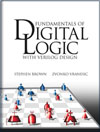
|  |
Foreward| Chess is a game that provides a splendid vehicle for displaying human intelligence in a competitive environment. During the past 30 years, it has also served as a platform for determining the extent to which machines can emulate intelligent behavior. Many chess programs are available for today's computers. Chess machines, comprising a computer and a chess-playing program, are now capable of defeating even the strongest human players. The ultimate challenge took place in 1997, when IBM's Deep Blue chess machine defeated the World Champion Garry Kasparov in a six-game match. The essence of this machine are logic circuits, algorithms, and software-coupled with people who know how to use these resources. Although all of these factors are crucial, the greatest leap forward, in terms of chess playing strength, was made when extremely powerful logic circuits were developed. Most of these circuits are used in general purpose computers, but some are specialized for the chess playing application. A key reason why the Deep Blue machine is so strong is that it can evaluate about 200 million chess positions in one second. This textbook deals with logic circuits and explains how they are designed. We have included in the book the moves from the decisive sixth game of the match to remind the reader of the incredible possibilities that are attainable with well-designed logic circuits. Deep Blue played with the white pieces.
|
|
|